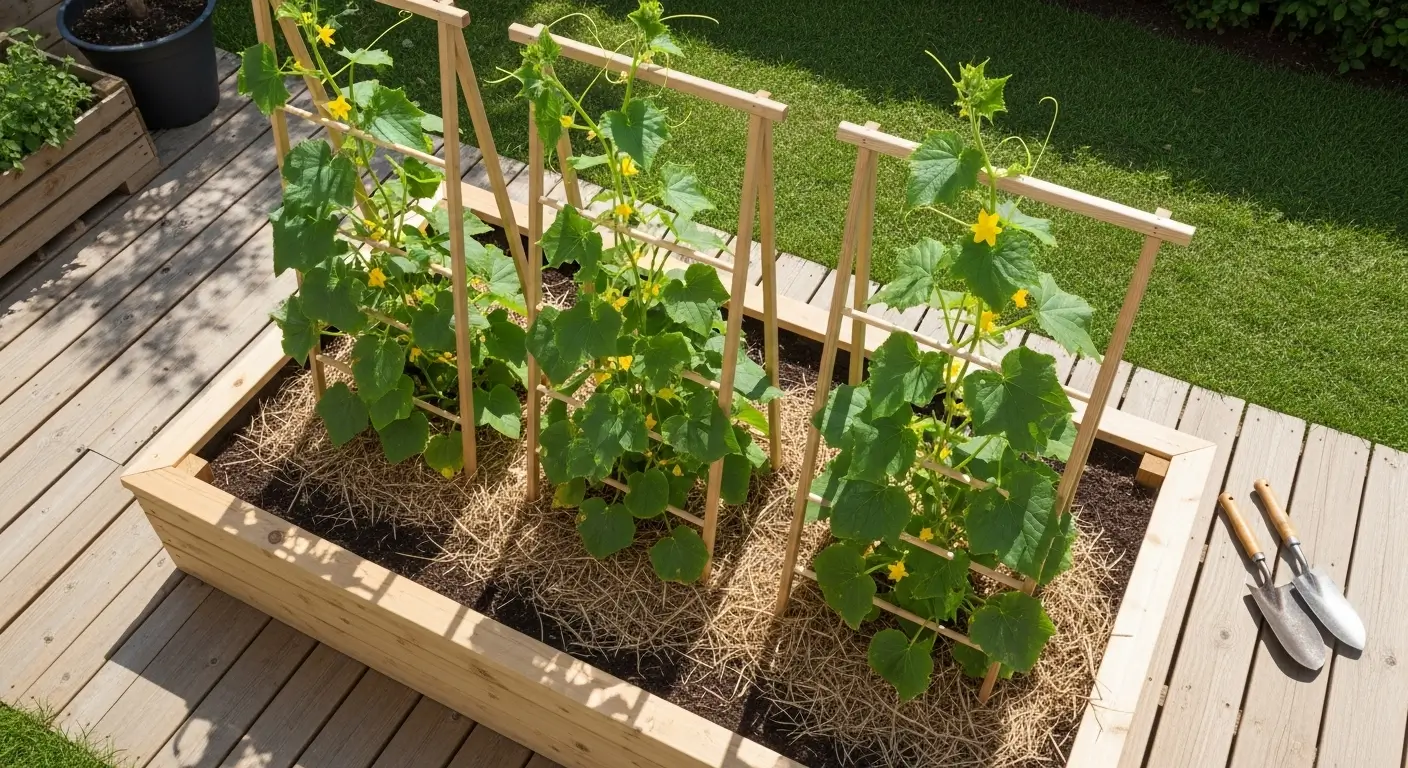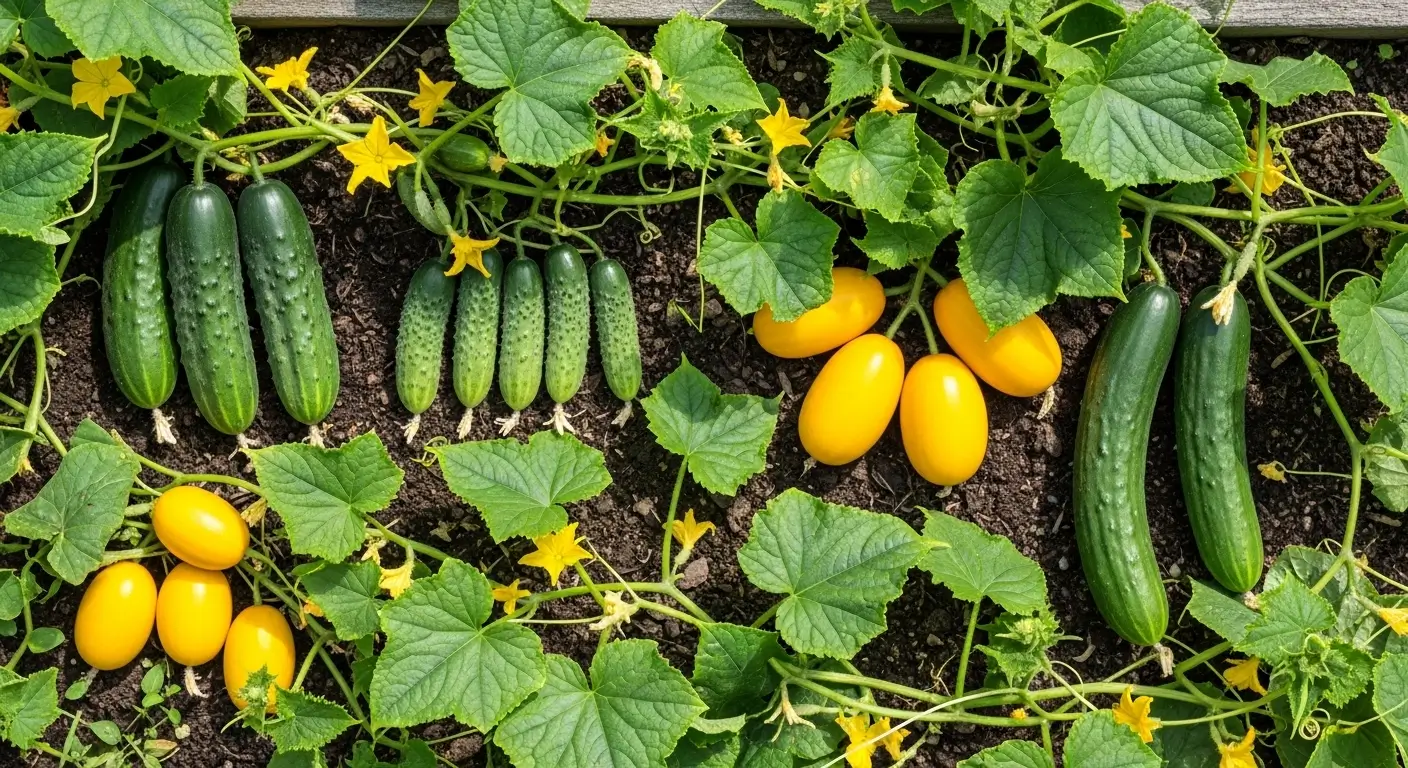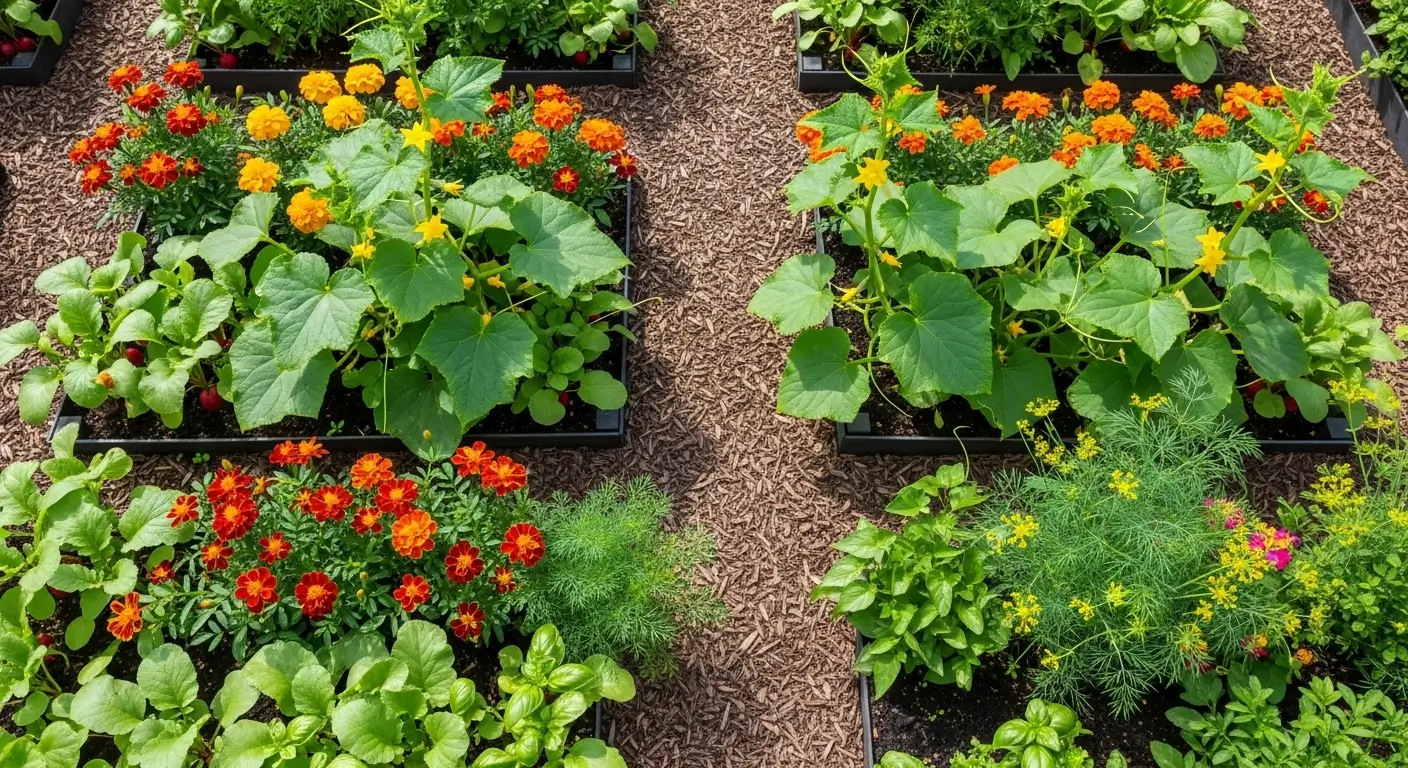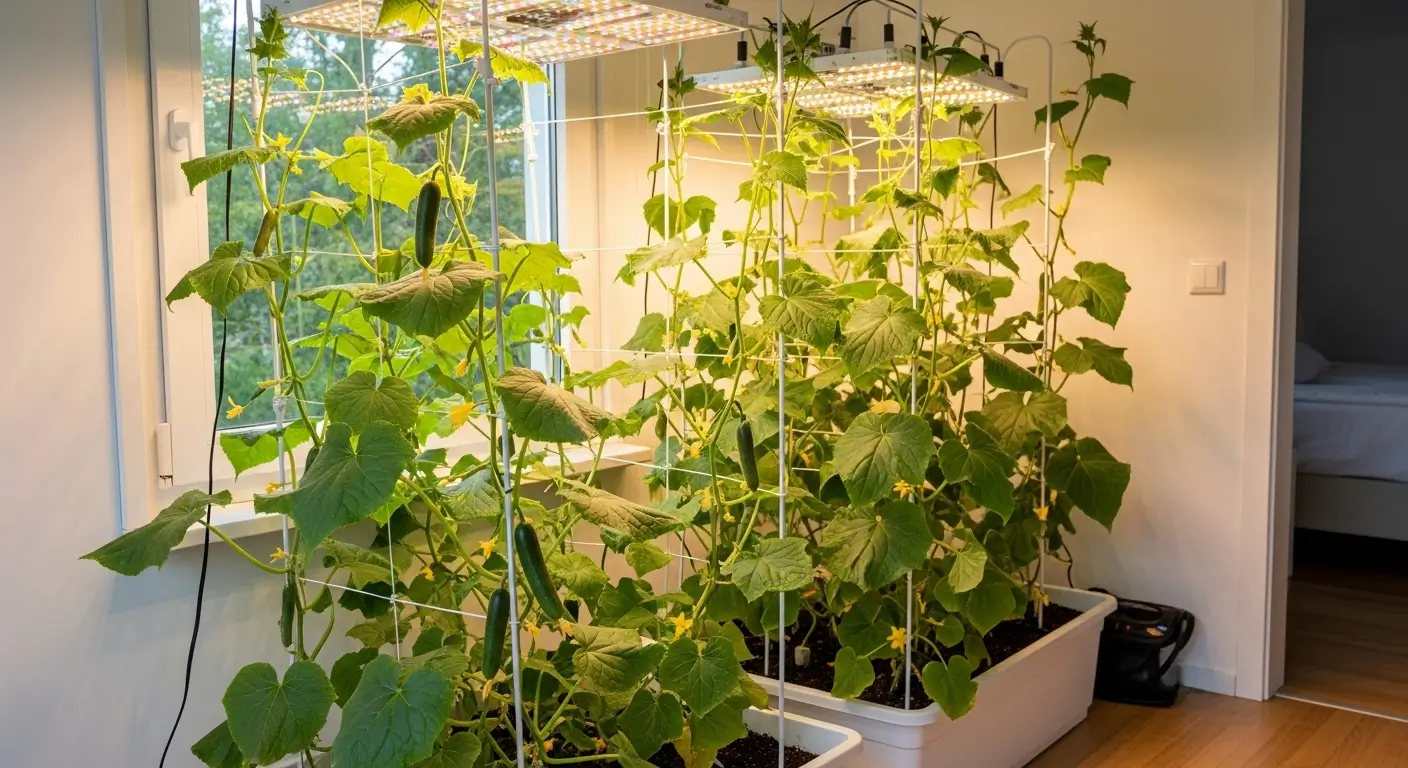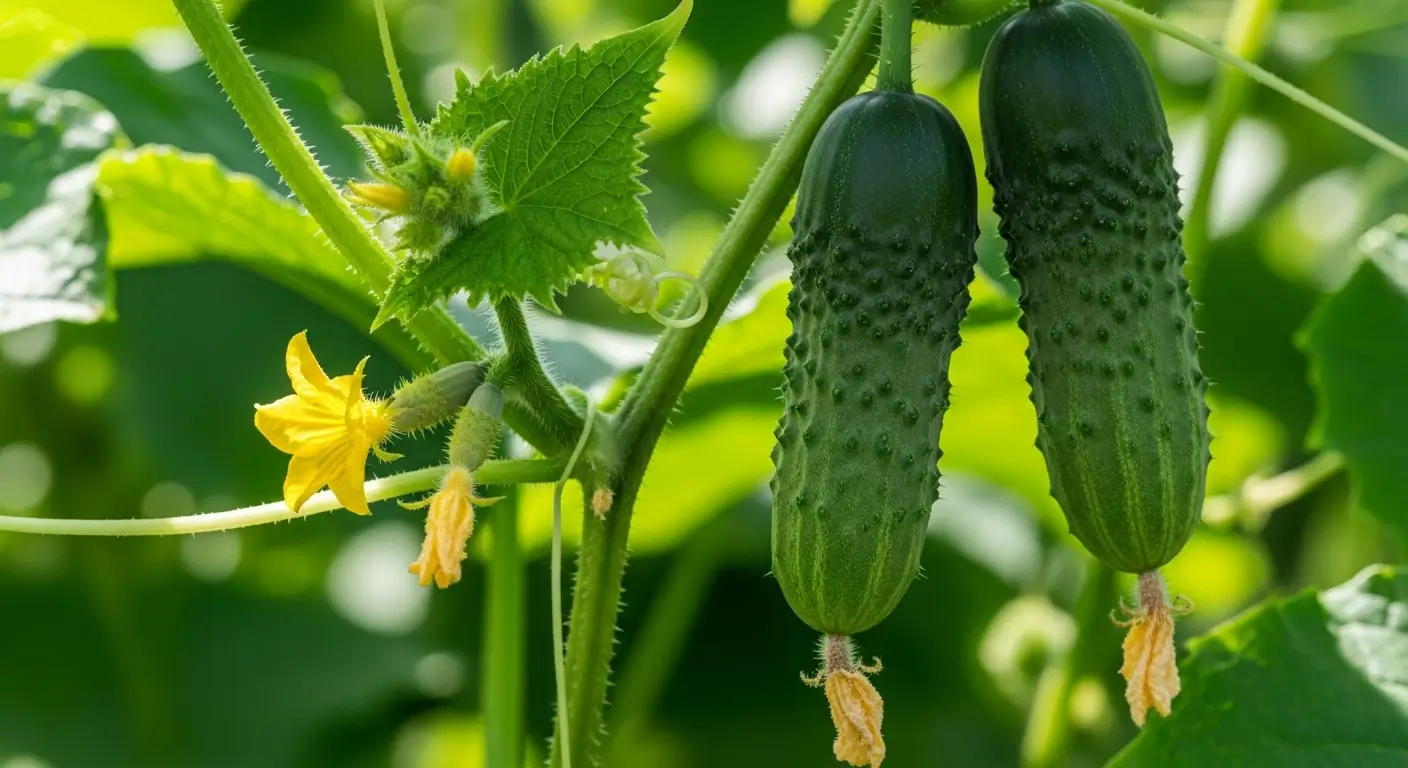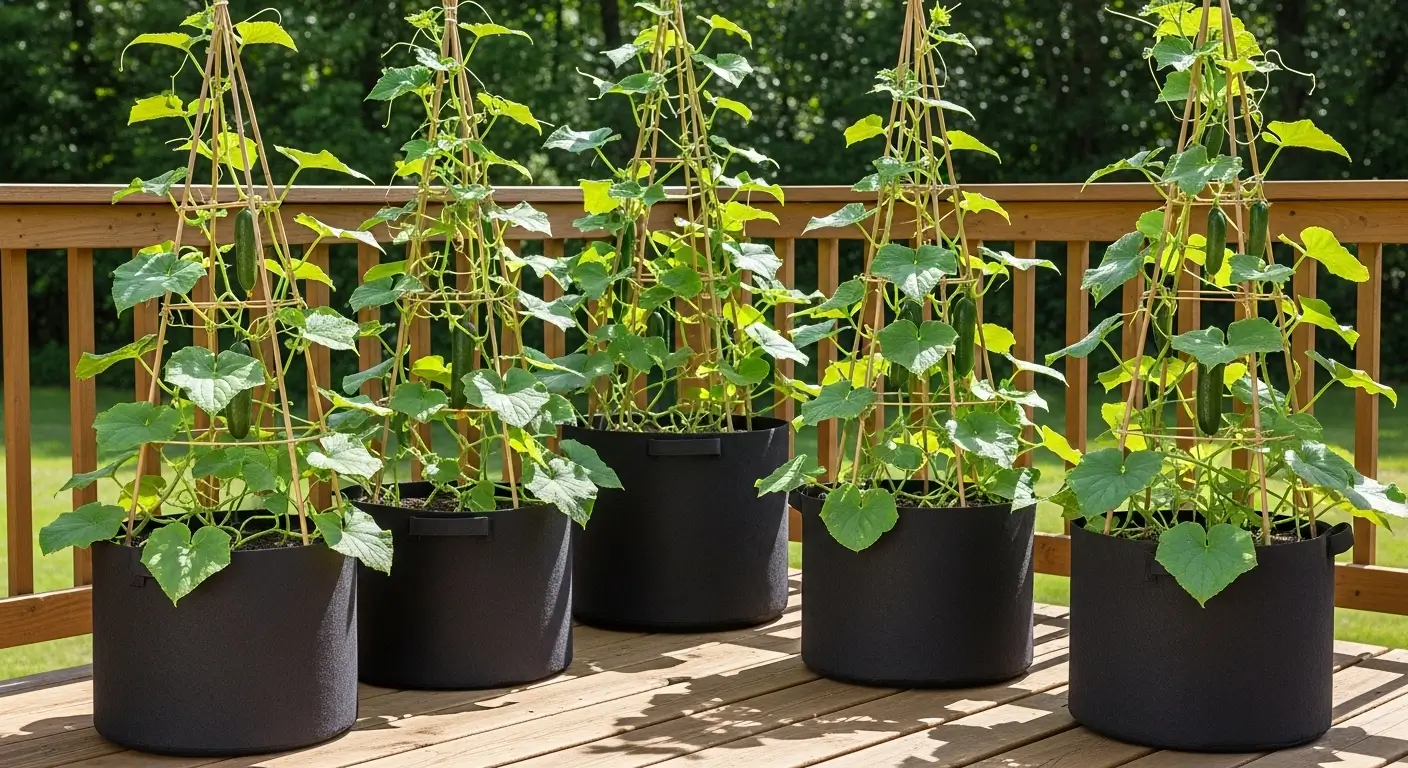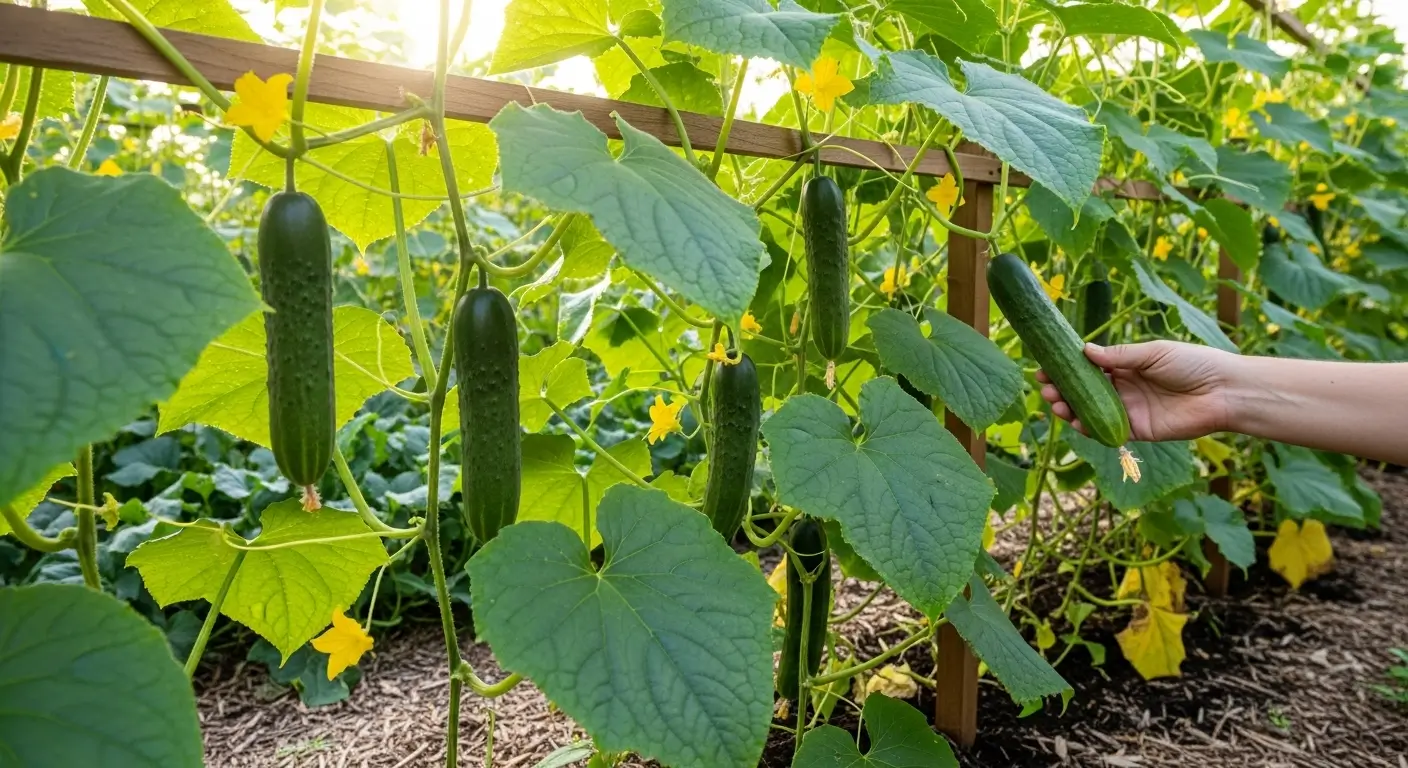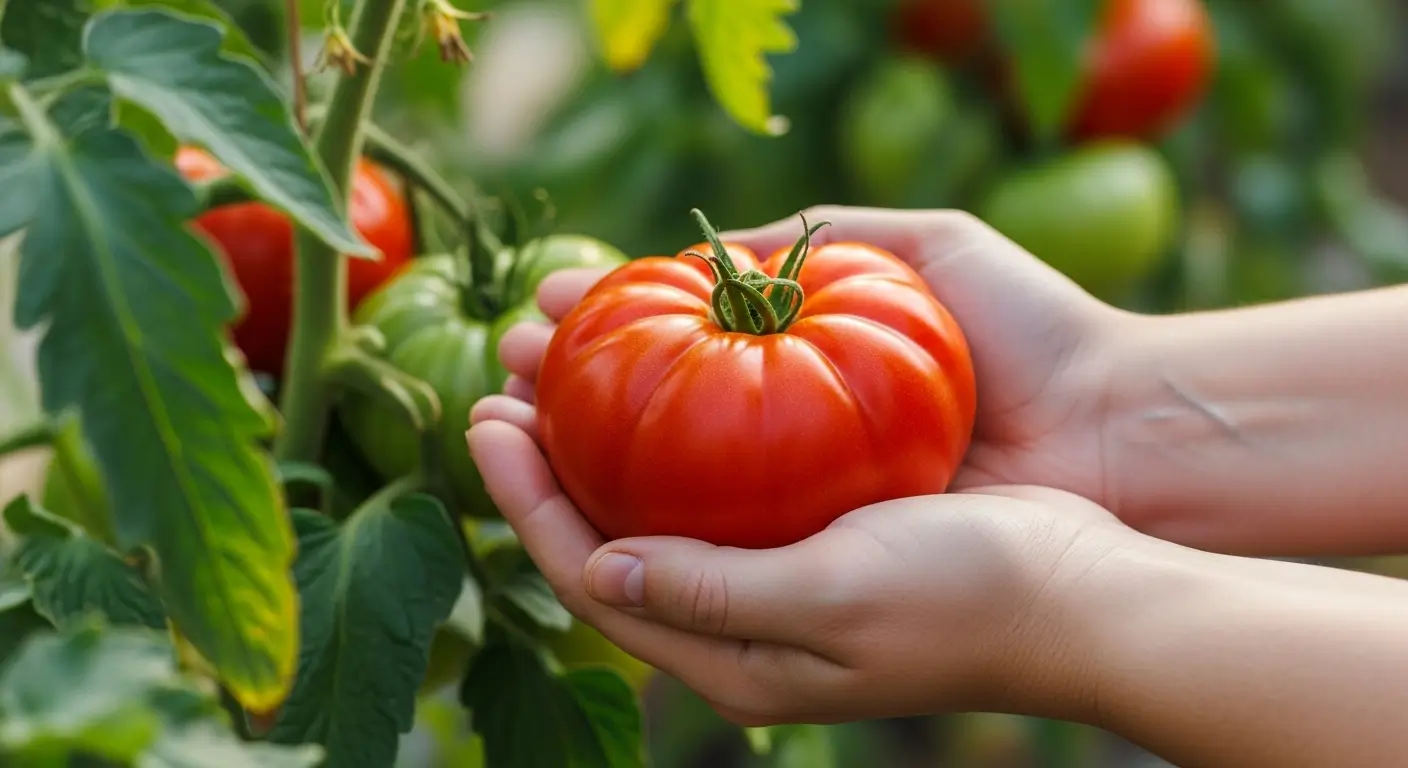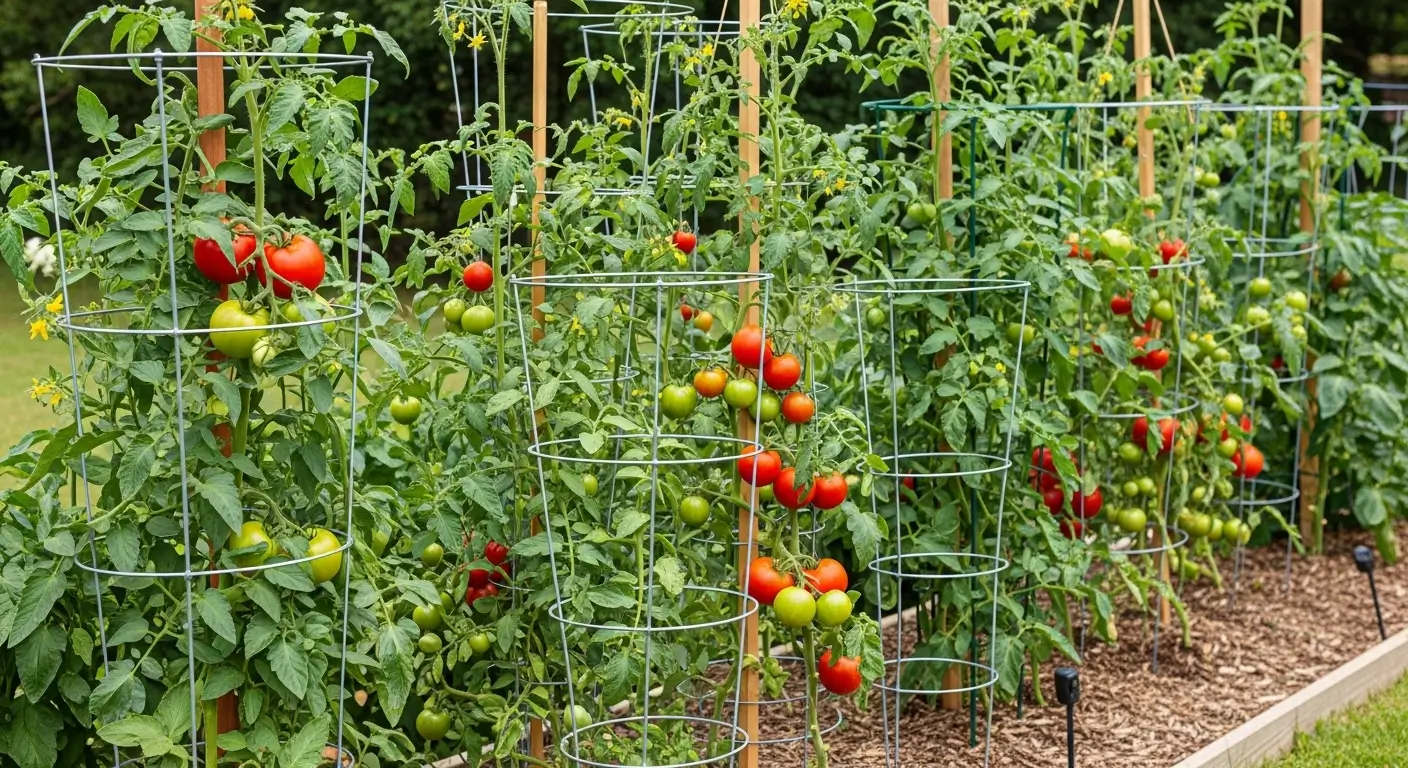Okay, let me tell you about my epic cucumber fail from a few years back. Picture this: I’m excited about growing cucumbers in raised beds. So what do I do? I stuff four cucumber plants into my tiny 4×4 bed, thinking “more plants = more cucumbers!” Spoiler alert: that’s not how it works. By July, I had this crazy cucumber jungle that looked like something from a horror movie, barely any actual cucumbers, and enough powdery mildew to start my own science experiment.
But that disaster taught me everything I know now about the best raised bed setup for cucumbers. And honestly? Once you figure this out, you’ll swim in fresh cukes all summer. Your neighbors will be knocking on your door asking for your secrets – trust me on this one.
Table of Contents
Why Raised Beds Are Perfect for Cucumbers
Look, I’ve tried growing cucumbers everywhere – in my awful clay soil (don’t even get me started), in pots on my deck (better but kinda limiting), and finally in raised beds (total game changer). Here’s why I’m never going back to anything else.
First off, the drainage is excellent. Cucumbers hate soggy soil more than I hate finding slugs in my lettuce. With raised beds, you can play god with your soil mix, creating this perfect little cucumber paradise that drains well but still holds enough moisture.
And can we talk about how much faster the soil warms up? I’m getting my cucumber plants in the ground weeks before my neighbors are still poking at their frozen dirt with a stick. That head start means I’m harvesting cucumbers while they wait for their first flowers to appear.
Pest control is so much easier when everything’s up at eye level. I can actually see those sneaky cucumber beetles before they turn my plants into Swiss cheese. After losing an entire crop to those little green jerks one year, I’m all about anything that makes spotting them easier.
Planning Your Raised Bed Layout for Maximum Cucumber Production
Alright, let’s talk about the best raised bed setup for cucumbers without getting all fancy about it. You need at least 4 feet of width – anything smaller and you’re just making things harder on yourself (and your cucumbers).
In my standard 4×8 beds, I only plant three cucumber plants max. I know, I know, the seed packet says you can cram in way more, but seriously – don’t fall for that trap like I did. Overcrowded cucumbers get cranky, diseased, and basically give you the plant equivalent of the silent treatment.
Here’s what works for me: I plant my cucumbers along one side, about 18 inches apart. This gives me room for a trellis without turning my bed into a cucumber obstacle course. The rest of the space? Perfect for lettuce, radishes, or whatever herbs I’m obsessing over that season.
Got a smaller bed? No worries! I’ve made 3×6 beds work by going vertical with bush varieties or training vining types up some sturdy supports. The trick is not trying to fight the space you have.
Look, I get it – figuring out exactly how many cucumber plants to squeeze into your raised bed without overcrowding them can be tricky. I used to just guess and hope for the best (spoiler alert: that didn’t work out so well). After years of trial and error, I’ve figured out the perfect spacing formulas for both vining and bush varieties. Instead of making you do the math yourself, I created this handy calculator that’ll tell you exactly how many plants your bed can handle and how much space you’ll have left for companion plants.
🥒 Cucumber Planting Calculator
Pretty cool, right? This calculator takes all the guesswork out of planning your cucumber layout. I wish I'd had something like this when I was starting out – it would've saved me from that cucumber jungle disaster I mentioned earlier! The spacing recommendations are based on what I've found works best in real gardens, not just what the seed packets suggest.
Essential Soil Preparation for Cucumber Success
After killing more cucumber plants than I care to count with crappy soil prep, I've finally figured out the perfect recipe. Think of it like making the world's best chocolate chip cookies – you can't just wing the ingredients and hope for the best.
My foolproof soil mix is dead simple: equal parts good potting soil, compost, and either perlite or coarse sand for drainage. Yeah, it costs a bit upfront, but this is like buying good tools – you do it once and you're set for years.
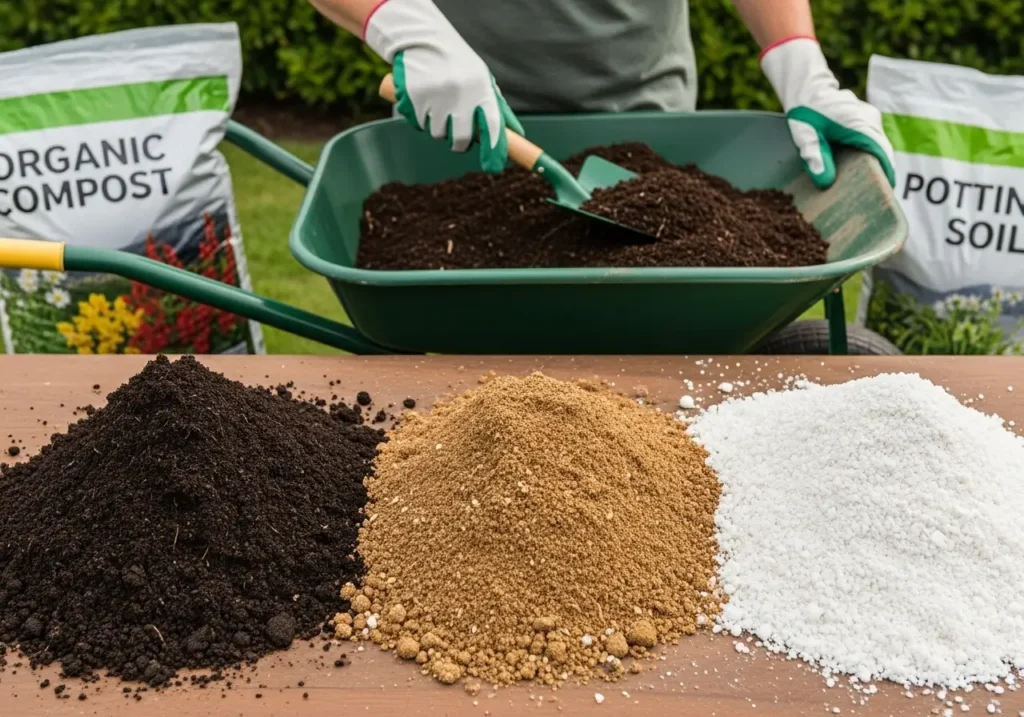
Before I plant anything, I always test my soil pH. Cucumbers like things slightly alkaline, around 6.5 to 7.0. My soil always tests acidic (because it does), so I add some garden lime about a month before planting. Don't skip this step – I've watched perfectly healthy plants throw tantrums just because the pH was off. If you've never tested soil pH before or want to learn different testing methods, Cornell University provides an excellent step-by-step guide on how to test soil pH using both home methods and lab testing.
The compost part is huge. I work in at least 2-3 inches of the good stuff every spring, plus some organic fertilizer. This year, I'm trying worm castings mixed with my regular compost, and so far, the plants seem pretty happy about it.
Choosing the Right Cucumber Varieties for Raised Beds
Not gonna lie, picking cucumber varieties can be overwhelming. There are like a million options out there. But after testing way too many over the years (my family was getting pretty tired of cucumber everything), I've got some solid favorites.
For vertical growing – which you should totally try – go with 'Suyo Long' or 'Japanese Climbing.' These things are like the overachievers of the cucumber world. 'Suyo Long' is my favorite because the cucumbers can get ridiculously long but never get bitter or harsh.
If you want something more compact, 'Spacemaster' and 'Salad Bush' are perfect. I grow these when I'm feeling lazy about trellising or when I'm mixing cucumbers with other stuff.
For all my pickle-making friends out there (yes, that's definitely me), 'Boston Pickling' and 'National Pickling' work great in raised beds. I plant these every two weeks, so I'm not drowning in cucumbers all at once – learned that lesson the hard way one August.
Oh, and definitely look for disease-resistant varieties. After three years of battling downy mildew (not fun), I only choose varieties that can fight back. 'Marketmore 76' and 'Straight Eight' are total champions in this department.
Mastering the Art of Vertical Cucumber Growing
Okay, this is where things get really fun. Going vertical totally changed my raised bed cucumber game, and I was such a skeptic at first. I thought it was just for those fancy Instagram garden accounts, but wow, was I wrong.
My go-to setup uses cattle panels attached to sturdy posts. These 16-foot panels are like the pickup trucks of trellis systems – they work and last forever. I put them at the back of my beds so they don't shade everything else. Yeah, they're not cheap, but I've been using the same ones for five seasons now.
If you're on a budget (been there), homemade trellises work great too. Make sure whatever you build can handle the weight – I learned this when my first DIY attempt collapsed under a super productive cucumber plant. Not my finest gardening moment.
Training the vines takes a little patience. I start when the plants are about 6 inches tall, gently weaving the main stem through the trellis. Check on them every few days during the crazy growth period – these things can grow scary fast if you're not paying attention.
Watering Strategies That Actually Work
Here's the thing nobody tells you: cucumbers in raised beds need completely different watering than regular ground cucumbers. That excellent drainage that makes raised beds so great also means they dry out way faster, especially when it's blazing hot outside.
I've found that deep, less frequent watering is the way to go. Instead of sprinkling them every day like houseplants, I give them a really good soaking twice a week. This teaches the roots to grow deep instead of staying lazy at the surface.
Mulch is absolutely essential – like, don't even think about skipping this. I use straw around my plants, about 3-4 inches thick. It keeps the moisture in and weeds out, preventing annoying soil splash-back that can spread diseases.
I finally broke down and got drip irrigation with timers, and honestly, it's been life-changing. No more dragging hoses around or forgetting to water for three days straight (we've all been there). If you're still hand-watering, aim for the base of the plants instead of spraying the leaves – cucumber leaves are like drama queens when it comes to fungal diseases.
Companion Planting Strategies for Raised Bed Cucumbers
One of the most incredible things about growing cucumbers in raised beds is playing matchmaker with your plants. The controlled space makes setting up these beneficial plant friendships much easier.
Nasturtiums have become my cucumber's best friend. These cheerful flowers act like living mulch, help keep cucumber beetles away, and bonus – you can eat the leaves and flowers in salads! I plant them around the base of my trellises where they can spill over the edges and look all fancy.
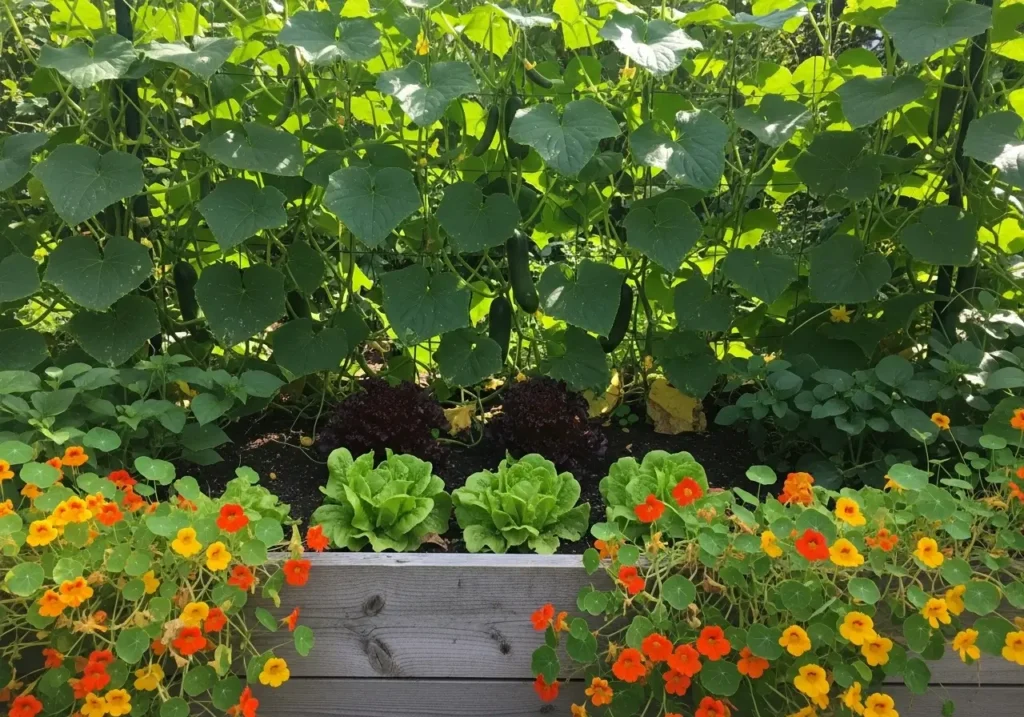
Radishes are perfect for early-season companionship. I tuck them in between my cucumber transplants in spring, and by the time the cucumbers need that space, the radishes are ready to harvest. It's like getting a free crop from the same real estate.
Lettuce works amazingly well in the shadier spots, especially under the cucumber canopy. This natural shade helps prevent the lettuce from bolting when summer heat hits – a happy accident I discovered entirely by chance.
But here's a pro tip: don't plant strong-smelling herbs like sage or rosemary too close to your cucumbers. I noticed my cucumber production dropped when I did this. Apparently, some plants don't vibe together.
Pest Management in Raised Bed Systems
Even though raised beds give you some natural pest protection (it's like having the high ground in a battle), raised bed cucumbers still have their fair share of enemies. Cucumber beetles are public enemy number one, and I've developed a whole battle plan for these little green menaces.
Row covers are your best friend early in the season. I slap them on right after transplanting and take them off when flowers show up for pollination. This protection during the baby plant stage makes such a huge difference.
Yellow sticky traps around the beds help me keep tabs on how many beetles are lurking around. I check these weekly and get a weird satisfaction from seeing all the pests I've caught. It's the little victories, you know?
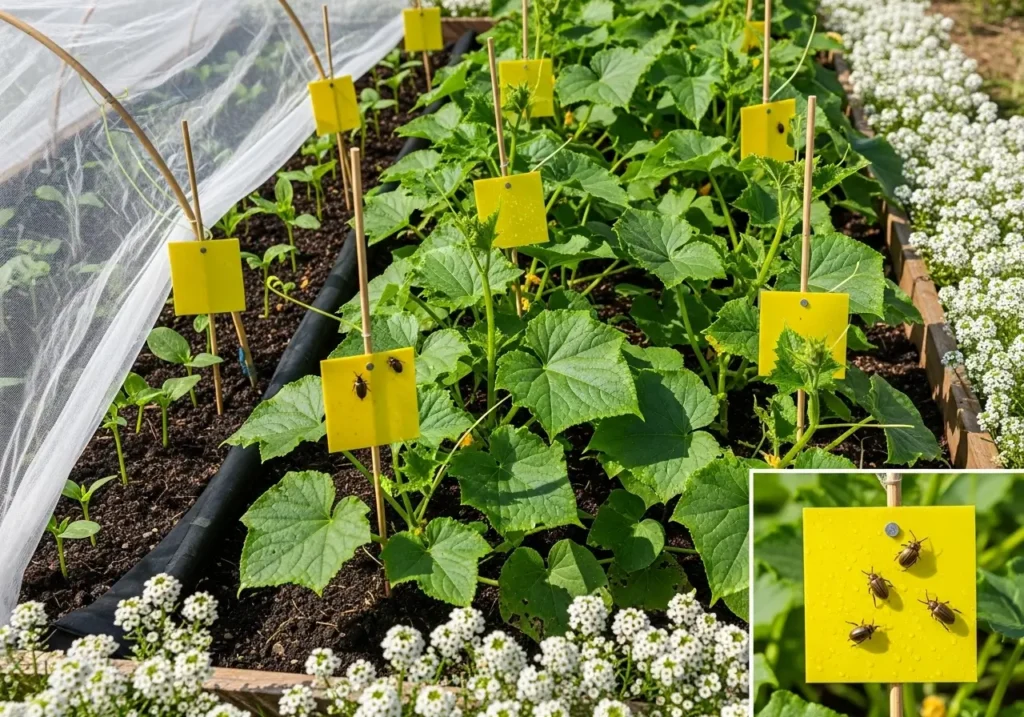
I try to keep many good bugs around by planting flowers like alyssum and calendulas nearby. These beneficial insects are like having a free pest control service – they munch on the bad guys so my cucumbers don't have to deal with them.
I'll use organic insecticidal soap for nasty infestations, but honestly, I'd rather prevent problems with healthy soil and vigorous plants. A well-fed cucumber can handle a lot more pest pressure than a struggling one.
Harvesting and Succession Planting for Continuous Production
The secret to never running out of cucumbers is all about timing your harvests and plantings right. I pick my cucumbers when they're young and tender – usually 6-8 inches for the slicing varieties. During peak season, I'm out there every single day harvesting because once they get too big, the plant basically goes on strike and stops making new ones.
I always use scissors or pruning shears instead of yanking them off the vine. Trust me, pulling damages the plant, creating little wounds where diseases can sneak in. I like to harvest in the morning when the cucumbers are all crisp and hydrated from the cool night.
Here's my succession planting game: I do three plantings – early May for summer harvest, early June for peak production, and mid-July for fall cucumbers. This way, I'm never completely overwhelmed with more cucumbers than I know what to do with (though let's be honest, there are worse problems to have).
To keep production going in the same bed, I'll start new plants in empty spots as the older ones wind down. It's like having a relay race of cucumber plants all season long.
Seasonal Care and Maintenance Tips
Taking care of raised bed cucumbers changes with the seasons, and once I figured this out, my success rate went way up. Spring is all about refreshing the soil and fixing any winter damage to my trellises.
Summer is when things get intense – constant watering, pruning those weird little shoots (suckers) that grow between the main stem and branches, and playing disease detective. I immediately yank off any yellowing or gross-looking leaves before whatever they have spreads to the healthy parts.
Fall is fun because you can extend the season with simple tricks. I use row covers on chilly nights to protect from light frosts. I've been picking cucumbers well into October, even here in chilly Zone 5b with this protection.
Winter is planning time – ordering seeds early (good cucumber varieties sell out fast), figuring out crop rotations, and maintaining equipment. It's also when I get to daydream about next year's garden and research new varieties.
Troubleshooting Common Raised Bed Cucumber Problems
Even when you do everything right, stuff sometimes goes wrong when growing cucumbers in raised beds. Bitter cucumbers are common and usually happen because of inconsistent watering or crazy temperature swings. The good news is that raised beds help a lot with this, but you still have to stay on top of the watering.
Powdery mildew looks like someone dusted your leaves with baby powder and spreads like gossip in a small town. Better air circulation through proper spacing helps prevent it. Still, when it shows up anyway, I remove the affected leaves and hit it with organic fungicides.
A poor fruit set (lots of flowers but no cucumbers) usually results in pollination problems. If you're not seeing many bees around, you might need to play matchmaker with a small paintbrush. Male flowers show up first, then you transfer their pollen to the female flowers (they're the ones with the tiny cucumber at the base).
Wilting plants with plenty of water usually means either root rot from too much water or bacterial wilt from cucumber beetles. Good drainage prevents the first one, and pest management handles the second.
Advanced Tips for Maximum Yields
After years of experimenting (and making plenty of mistakes), I've picked up some tricks that really boost raised bed cucumber production. Pruning might seem crazy, but removing lower leaves and suckers improves air flow and tells the plant to focus on making cucumbers instead of more leaves.
I started using reflective mulch – basically, aluminum foil or fancy reflective materials – early in the season to bounce more light to the lower leaves. It looks a little weird, but it definitely increases early production.
I give them a foliar feeding with compost tea or fish emulsion every two weeks during active growth. I do this early in the morning or evening so I don't fry the leaves. The plants usually perk up within days – darker green leaves and more vigor.
I use a soil thermometer to keep track of root zone temperatures, ensuring they stay in that sweet spot of 70-85°F. Mulching and consistent watering help maintain this naturally.
For way more detailed cucumber growing info, including tons more variety recommendations and season-long care tips, definitely check out our complete cucumber growing guide. And if you're dealing with super limited space, our container cucumber growing guide has tons of small-space tricks.
Timing is everything with cucumbers, so if you want to nail your planting schedule, our article on how long cucumbers take to grow breaks down all the timing details for perfect succession planting.
Your Path to Raised Bed Cucumber Success
Growing cucumbers in raised beds seriously transforms what can be a total headache into one of the most satisfying parts of vegetable gardening. The controlled environment, excellent drainage, and vertical growing possibilities create this perfect little cucumber paradise.
Start with getting your soil right – everything else builds on this foundation. Pick varieties that match your climate and what you actually want to do with your cucumbers (fresh eating, pickles, or both). Set up a solid vertical system to maximize your space and keep plants healthier.
Remember, consistency beats perfection every time. Regular watering, picking cucumbers when they're ready, and keeping an eye out for pests will reward you with tons of harvests all season long.
Your cucumber journey doesn't have to be perfect right out of the gate – mine sure wasn't! Every season teaches you something new; honestly, that's half the fun. There's nothing quite like slicing into a perfect cucumber that traveled about ten feet from plant to plate.
What's your biggest cucumber challenge? Drop a comment and let me know – I love swapping stories with fellow gardeners and helping figure out those tricky situations. Let's grow excellent cucumbers together!
Frequently Asked Questions About Growing Cucumbers in Raised Beds
How many cucumber plants can I grow in a 4x8 raised bed?
For vining cucumbers in raised beds, plant a maximum of 3 plants with 18-inch spacing in a 4x8 bed. Bush varieties can accommodate up to 6 plants with 12-inch spacing. Overcrowding leads to poor air circulation, disease problems, and reduced harvests.
What's the best soil mix for cucumbers in raised beds?
The ideal soil mix combines equal parts quality potting soil, compost, and perlite or coarse sand for drainage. Test and adjust pH to 6.5-7.0 using garden lime if needed. Add 2-3 inches of compost annually and organic fertilizer before planting.
Do cucumbers in raised beds need a trellis system?
Yes, vertical growing with a trellis is highly recommended for cucumbers in raised beds. Use cattle panels or sturdy wire mesh at least 6 feet tall. Start training vines when plants reach 6 inches tall by gently weaving stems through trellis openings.
How often should I water cucumbers in raised beds?
Water cucumbers in raised beds deeply twice per week rather than daily light watering. Raised beds drain faster than ground soil, so deep watering encourages strong root development. Use drip irrigation or water at the base to avoid wetting leaves and prevent diseases.
